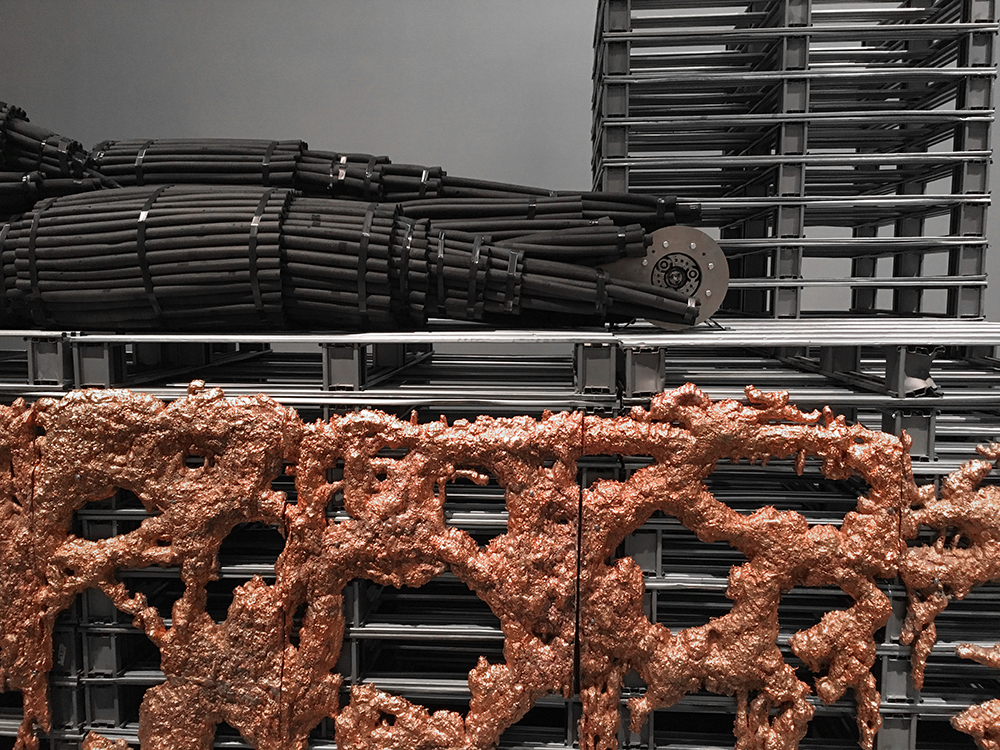Dear Stefano,
It has been more than four years now since our first correspondence. Things look pretty much the same, still a lot has changed. Somehow, we recently figured out that we never told you about the sabotage on that bridge which we have been often visiting lately.
The bridge was built some years ago as part of a greater logistical infrastructure project, a cargo railway of Chinese interests that connects industrial areas around Athens with the Piraeus port. According to the story that the train operator confided to a local resident, the engine that pulled the thirty-eight container wagons of the train’s inaugural journey collided with an improvised barricade. There were no significant casualties, so the train continued its route. However, the mysterious act was repeated on the return journey. Like in the first incident, no remarkable damage was caused. To our knowledge, no one claimed the action of the sabotage on the bridge. The first time we visited the spot we thought that we would find some evidence of the train’s double collision. We found no traces, apart from a massive mural of illegible black forms that fully covered both the sides of the bridge. It was signed with the tag Ofrah Fergal Kasei, a moniker of a plural subject that we would later have the chance to meet in person.
We are writing to you now because what you explained back then still resonates with us. You said that logistics is after something, it is in pursuit of some set of relations, relations that have always been prior to it. You suggested that logistics represents the second attempt we have seen in the history of capitalism to free itself entirely from labour, with the first attempt being finance. This time, the attempt would be the optimization of movement of everything, an idea of frictionless connectivity and unconditional compatibility, involving autonomous mobile agents, elaborate evolutionary algorithms, genetic versions of the traveling salesman problem. You implied that what logistics wishes for is the bypass of the controlling subject, the elimination of human time, the organisation of human life as its mirror image. And yet, you proposed a different term to frame all these processes, this logistical fantasy. The word you used for this productive relations among things, bodies and capacities was logisticality. Logisticality as a mode amongst us to connect in a way that the connection, adaptation, translation, resonance, rhythm or communication does not go through fully formed subjects. Logisticality of which the historical genesis was the very first massive logistics of the modern era, the global slave trade, those who have long been bypassed, the shipped.
But then, you also reminded us that if bodies, if affect and intellect could be just things among things as logistics imagines, the smooth movement of everything would have already been achieved. In your own words, things resist, and things are resistant. Thus logistics never reaches the simultaneity of the concrete, the informal place and time of language, music, bodies and organisation, this dwelling of the shipped that you and Fred have been talking about.
It seems hard to evaluate intentions and actions nowadays. We have however found ourselves retelling and restaging the incident of the bridge more than once these last years. We have been writing down notes from our shared memories, documenting with photographs and videos the bridge and its surroundings, as well as sourcing materials from the nearby area. Some we found disposed around, like a massive pile of discarded and filthy cable-jacket tubes. Others we purchased from local junkyards, which are part of the new parasitical economies that have been rising due to the destabilization of local industries and customary labor conditions since the privatization of the Piraeus harbor. We think of the copper scrap we now stock as our small treasure. We have been configuring everything into an unresolved story, told in the language of matter and space.
We are now looking again at the governing protocols and logistical networks which span from the ancient to the contemporary incarnations of the Silk Road that passes through this specific spot of the Mediterranean sea. We started the new chapter of our story by turning our copper scrap into mirrorings of the mural that Ofrah Fergal Kasei inscribed on that bridge. Like in every story, there is also a main character. Like in many tales, there is a monster as well. So, we are weaving the remainders of our cable-jackets into a muscle structure. It pretty much resembles an artificial arm. We are in the first phase of providing it its own constructed agency, animating it with a robotic system. There is no time or will for it to be functioning properly. It is going to be a disassembled entity, with its machinic joint performing circular movements of precise rotations around itself, an orchestrated animation for a perpetual calibration. We had in mind Hero of Alexandria, who like the ancient Chinese was fascinated by fabricating automations, either as utilitarian technologies or theatrical plays. He used to call them miracles. Similarly, you could expect a stage for a pending play. Honestly, however, it is not really a play. You could imagine it rather as our version of an incantation.
We hope that you will get the chance to see it at some point.

